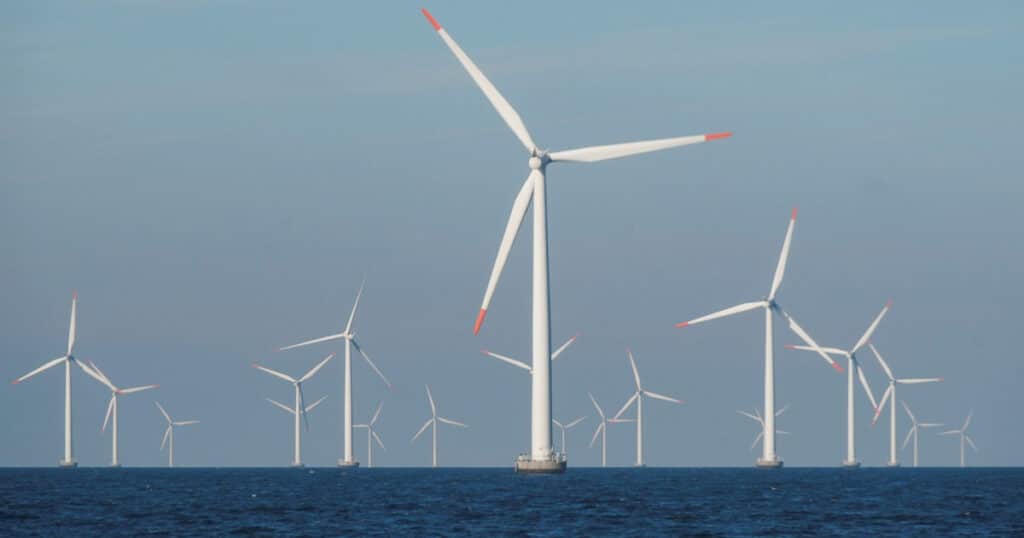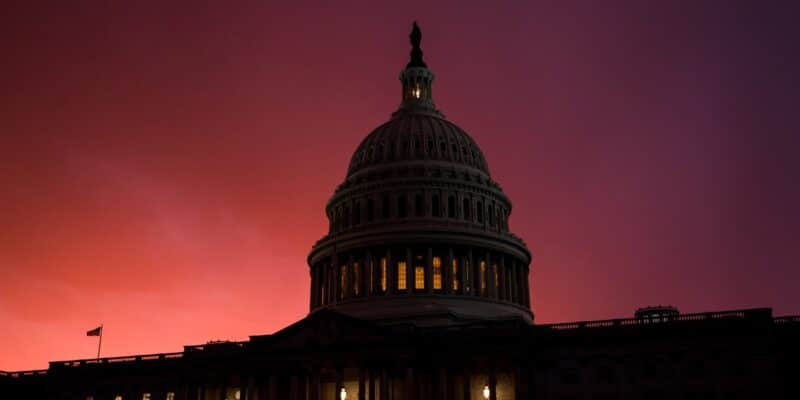
Wind, Solar Projects Can Stick Taxpayers With the Tab Coming and Going
This article was originally published at The Empowerment Alliance and is re-published here with permission.
When it comes to our energy future, it is often true that what many on the left consider an enlightened long-term view is in fact short-sightedness that fails to reflect the full consequences of their actions.
Such is the case with the liberal media’s fawning over the Republican governor of Wyoming for his embrace of “alternatives,” including a glowing profile last year on CBS’ “60 Minutes” for his advocacy for wind turbines. “Wyoming Gov. Mark Gordon pursues green, carbon-negative agenda in one of the nation’s reddest states,” trumpeted the online version of the piece.
Many Wyoming residents are not on board, including from his own party. The state GOP passed a “no confidence” vote on Gordon in 2023 after his climate-related remarks at Harvard University. And a New York Times story (written in 2021, updated in 2023) on Wyoming’s energy landscape noted that many residents have frequent complaints about turbines taking over hunting land, lights polluting the night sky and energy transmitted out of state. The controversy has dragged on into 2025.
For Gordon and others, “Wyoming is very windy” seems to be the simplified justification for erecting unsightly wind turbines across the landscape. But what makes a Republican official’s championing of wind or solar concerning is not so much his belief in the (dubious) effectiveness of the energy source as appearing to brush aside the actual cost to taxpayers.
How many wind and solar farms have sprung up across the U.S.? Estimates show nearly 1,400 utility-scale wind farms and more than 6,700 solar farms. Those farms consist of more than 70,000 individual wind turbines and more than 200 million solar panels, (according to AI calculations based on available information on estimated capacity data and individual panel wattages).
It’s important to understand the vast array of individual wind and solar components because someday, starting in the not-too-distant future, they will individually wear out. What happens then?
According to government estimates, many turbines are already nearing end-life status, meaning they will either need “repowered” or decommissioned. “The time to disassemble, demolish, and remove wind turbine components and wind energy project-related infrastructure and conduct restoration activities can be 6–24 months, depending on the size of the turbines and the number of turbines involved in the project,” according to government guidelines.
For solar installations, the issue is even more pressing. “By 2030, the United States will need to manage around one million tons of solar panel waste,” according to a recycling industry estimate. “This number is expected to grow to 10 million tons by 2050, making the U.S. the second-largest producer of solar panel waste globally. Currently, only about 10% of decommissioned panels are properly recycled, despite containing valuable materials like silver, silicon, and aluminum.”
Proponents of “alternatives” insist that the costs for decommissioning wind and solar installations are typically assumed by companies through agreements negotiated at the time of construction. That’s small comfort considering that more than 100 solar companies have gone bankrupt in recent years, including residential, community solar projects and utility-scale installations. The year 2024 “saw an uptick in bankruptcy filings in each of these three sub-categories,” according to one industry tracker.
When that happens, taxpayers, of course, can be left holding the bag, even in cases where companies were required to secure bonds or other sureties in case of their demise. The fact that each state has different rules and varying levels of accountability complicates the picture. And the Biden administration’s lenient posture toward “renewables” leaves taxpayers with real reason for concern.
The Functional Government Initiative recently discovered that “in 2021, the Biden Interior Department’s Bureau of Ocean Energy Management (BOEM) waived the customary financial assurance for decommissioning on the lease of the Vineyard Wind project off the Massachusetts coast.” Subsequently, “Documents recently obtained by FGI show how much taxpayers are on the hook for if Vineyard Wind can’t afford to decommission: $191 million.”
Gov. Gordon insists he is taking an “all of the above” approach to energy. To be sure, Wyoming remains the nation’s top coal producer and a leading oil and natural gas provider. But “all of the above” is less appealing when we acknowledge that wind and solar projects exist largely thanks to taxpayer largesse.
One study says that from 2010 to 2023, solar received $76 billion in U.S. taxpayer subsidies, while wind received about $65 billion. That was before the Biden administration’s subsidies kicked in for “renewables,” which cost taxpayers $31.4 billion in 2024 and were projected to cost over $421 billion from 2025 through 2034, until the Trump administration began rolling back as many projects as possible. When it comes to “alternatives,” taxpayers were forced to put up billions in subsidies to build them, and will possibly be on the hook for untold costs to demolish them.
It is not unreasonable to fear that the coming solar and wind graveyards could be America’s next superfund cleanup burden. Politicians from the right and left who bask in the temporary glow of mainstream media approbation for embracing the “renewables” movement will eventually be held to account when the sun sets on the solar economy, and when our tax dollars are gone with the wind.
Gary Abernathy is a longtime newspaper editor, reporter and columnist. He was a contributing columnist for the Washington Post from 2017-2023 and a frequent guest analyst across numerous media platforms. He is a contributing columnist for The Empowerment Alliance, which advocates for realistic approaches to energy consumption and environmental conservation. The opinions expressed are those of the author and do not necessarily reflect the views of The Empowerment Alliance.
This article was originally published by RealClearEnergy and made available via RealClearWire.



